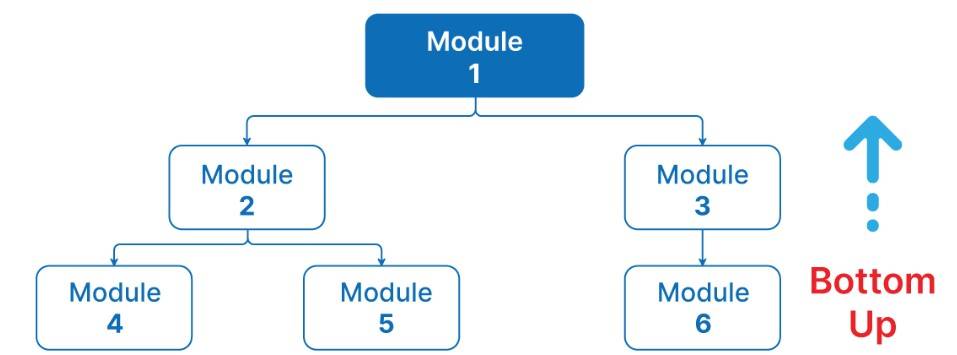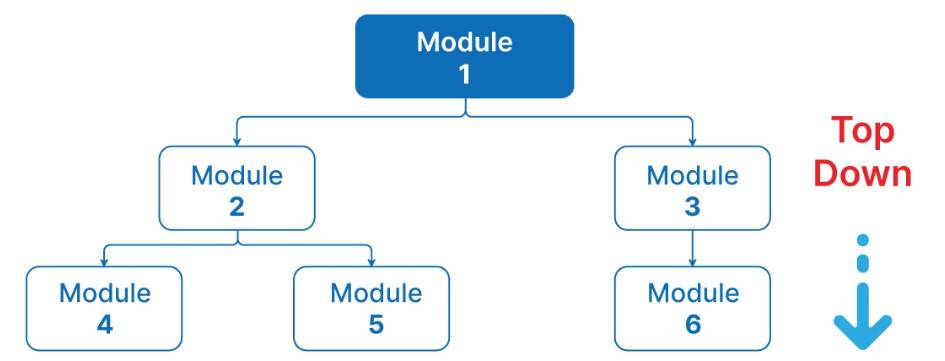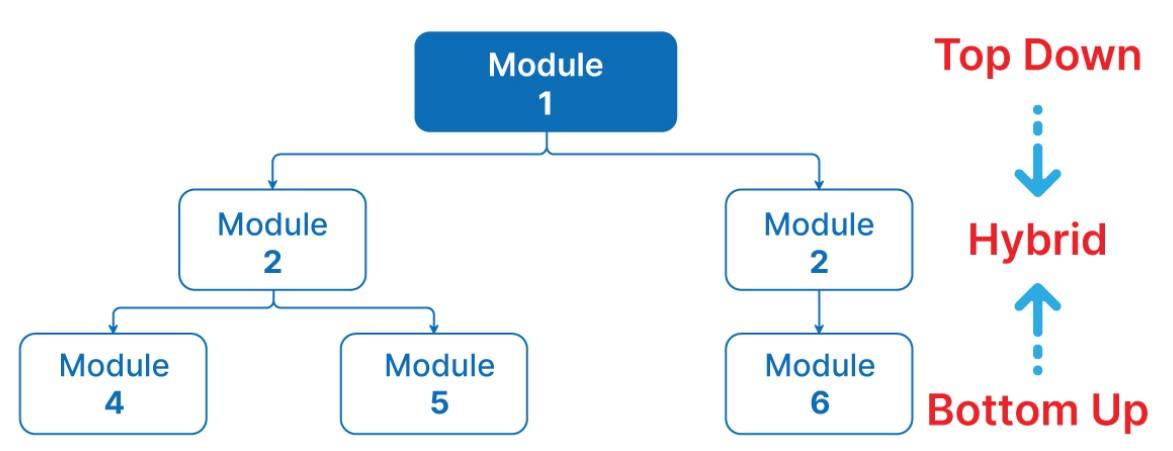Integration Testing: Real-life Example
Integration testing involves checking individual components or units of a software project to expose defects and problems to verify that they work together as designed.This article explained Integration Testing with real life example.Types of integration testig also explained with real life examples.
Integration testing is a software development practice commonly used to ensure the functionality of an application’s modules and components. Integration testing can be performed manually or automatically with tools such as Selenium. Manual integration testing is tedious and error-prone, whereas automated integration testing is too slow and inaccurate for most projects. Therefore, manually integrating your application’s modules and components before going through an integration test helps to catch bugs and verify that each module works as intended.
Best-suited Quality Assurance & Testing courses for you
Learn Quality Assurance & Testing with these high-rated online courses
What is Integration Testing?
Integration testing is testing in which software modules are logically integrated and tested as a whole group. A typical software project consists of multiple software modules coded by different programmers. This testing aims to find bugs in the software modules when they are integrated.
Look for ways to improve your integration test results. When performing manual or automated integration testing, always look for ways to improve performance and accuracy. One way to improve performance is using Python for all your unit tests. Python is a programming language that supports the development of both unit test suite codes without limitations. Therefore, it allows developers to write both unit and integration tests without limitations. Doing so saves time since developers can focus on writing high-quality code instead of struggling with slow unit testing tools.
Interested in making a career as a software tester? If yes, enrol in top software testing courses and certifications online from top vendors like Udemy, Coursera, edX, etc.
Real-life Example of Integration Testing
Suppose a car company is making a car. A car will include modules like an ignition, braking, engine, exhaust, and fuel system. So first, these systems will be tested individually, which will be unit testing. If you want to understand unit testing with the example, we have already covered this topic in our previous article. But if different systems are tested in a combined way, then that will be integration testing. For example the fuel system may be tested in collaboration with an exhaust system, and later, these two module’s working is tested in collaboration with the working of an engine. Now, this is integration testing.
Why is Integration Testing Important?
- To check the compatibility of modules: Integration testing is also considered the second level of the software testing process after unit testing.Thta means it is done after unit testing. A typical software project usually consists of many software modules, many of which are written by different programmers. Integration tests show the team how these different elements work together. After all, each entity can work perfectly on its own, but the immediate question is, “But can they work smoothly.
- Ensure accurate data receiving: Data is usually modified in transit. Therefore, it’s important to ensure that everything received from the API is correct and the response is what you expect. For this purpose, integration tests are very valuable.
Challenges in Integration Testing
- Integration testing means testing two or more integrated systems to ensure they are working correctly. In addition to testing the integration links, comprehensive environmental testing should be performed to ensure that the integration system is functioning correctly.
- There may be various paths and permutations that can be applied to test the integrated system.
- Integrating a new system into a legacy requires much change and testing. The same applies to the integration of any two legacy systems.
- It complicates the management of integration tests because there are a few factors, such as databases, platforms, and environments.
- Integration of two different systems developed by two different companies, you don’t know how one of the systems will affect the other if changes are made to one of the systems. Therefore, it is a big challenge.
- Several things should be considered to minimize the impact during system development, such as possible integration with other systems.
Types of integration testing
Big Bang Testing
This is the most straightforward integration testing approach, combining all modules and verifying functionality after completing each module test. Simply put, connect and test all the modules in your system. This approach is only practical for very small systems. If an error is found during integration testing, it can be complicated to identify, as the error could belong to any of the modules being integrated. Debugging errors reported during big bang integration tests are, therefore, costly to fix.
Bottom-up approach
In bottom-up testing, each module is tested at higher modules at lower levels until all modules are tested. The primary purpose of this integration test is for each subsystem to test the interfaces between the various modules that make up the subsystem. This integration test uses a test driver to drive the appropriate data and pass it to lower-level modules.
Real-life example, Paytm app have many features like paying bills, a shopping cart, transferring money to other accounts, buying movie tickets, and a Paytm wallet. Suppose the least priority feature they have is buying a movie ticket. So in a bottom-up approach buying movie ticket module will be tested first, then the second least priority feature will be tested with it in collaboration, and so on.
Top-down approach
In the context of this diagram, testing starts with module 1 and integrates subordinate modules 2 and 3 one by one and then will integrate module 2 with module 4 and module 5 and so on.Here suppose submodule 2 and 3 are not ready. So, in order to test the top module 1, we will develop “STUBS” in place of module 2 and 3.
A “stub” can be described as a snippet of code that takes input/requests from the top-level module and returns results/responses. This way, the lower modules don’t exist, but the higher modules can be tested.
For example, In the Paytm app, the highest priority feature is transferring money from one account to another; then, it will be tested; first, the second highest module is tested with it in collaboration, and so on.
NOTE:Stubs are used for testing if some modules are not ready.
Sandwich testing
Conclusion
Integration testing is an essential practice in software development that ensures the end product matches the developer’s expectations- it’s an essential step in the software development lifecycle! Since integration testing isn’t perfect and always requires fine-tuning, it’s always worth doing and improving!
FAQs
What is integration testing?
Integration testing is a software testing technique in which individual components are combined and tested as a group. The goal of this type of testing is to ensure that different modules work together as intended.
Why is integration testing important?
Integration testing is important as it helps to detect issues or bugs that were overlooked during unit testing. Apart from this, by conducting integrating testing, testers can verify whether the combined components function correctly or not.
What are the challenges in performing integration testing?
Here are some of the challenges in performing integration testing:
- Test environment setup: Creating an environment that mimics the production setup with all the integrated components can be complex and time-consuming.
- Test data management: Managing test data across different components and ensuring data consistency can be challenging.
- Dependency management: Coordinating dependencies between modules, especially when changes or updates are made, can be difficult.
- Defect isolation: Identifying the source of defects or failures in the integrated system can be tricky, as issues may arise from the interaction between multiple components.
How is integration testing performed?
Integration testing can be performed manually or through automated testing tools, such as Selenium. Testers create test cases based on the interactions between modules. They execute these tests to verify whether the data flows correctly and whether the different components interact as expected or not.
When should integration testing be conducted?
Integration testing should be conducted after unit testing and before system testing. This sequencing is important as it allows testers to identify integration issues between individual components early in the development process, maintain software quality and reduce the cost of fixing defects later.
What tools are used for integration testing?
There are "n" number of tools that helps in conducting integration testing, such as JUnit, TestNG, and Postman for API testing. These tools help automate tests, manage test cases, and report results efficiently.










